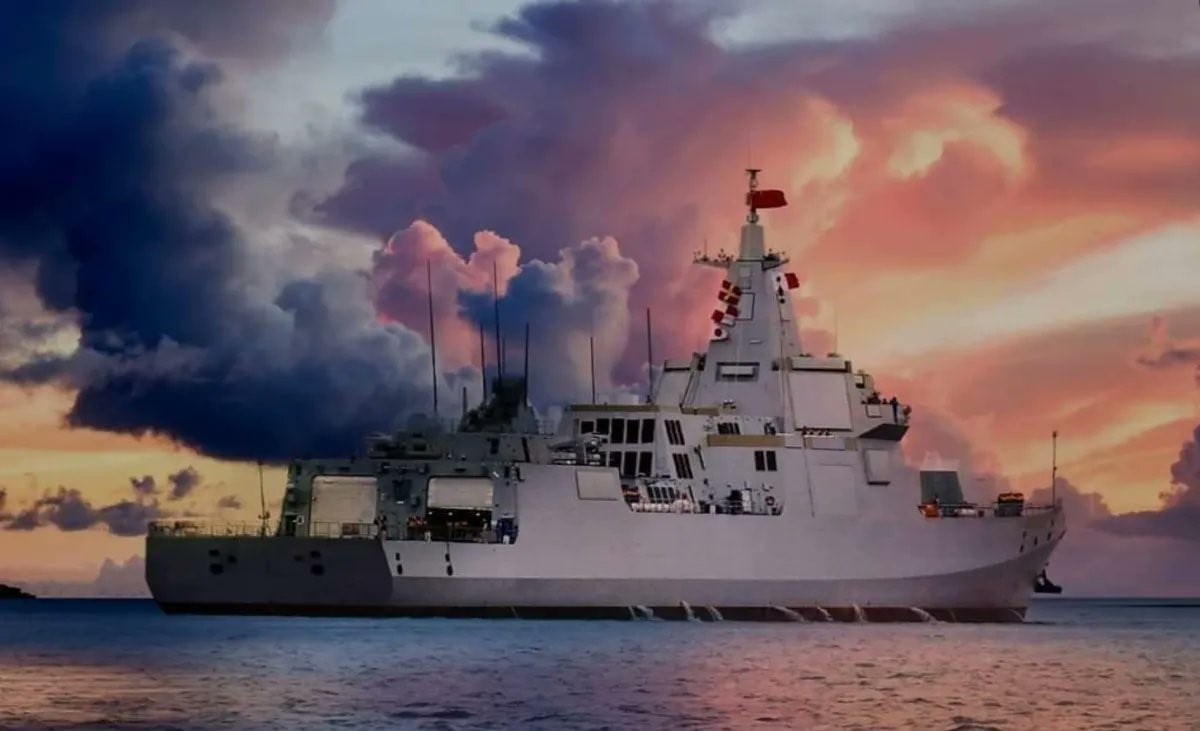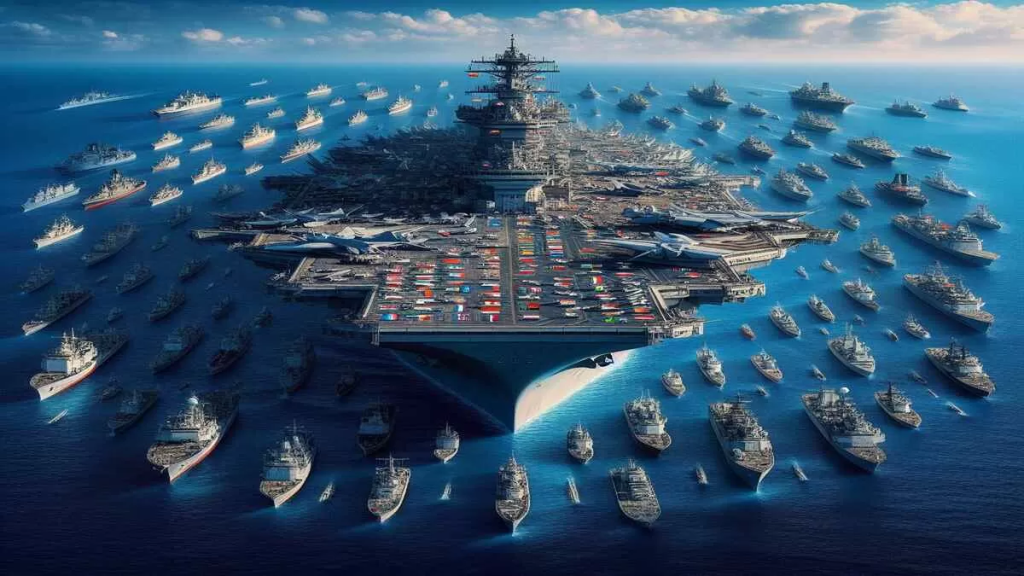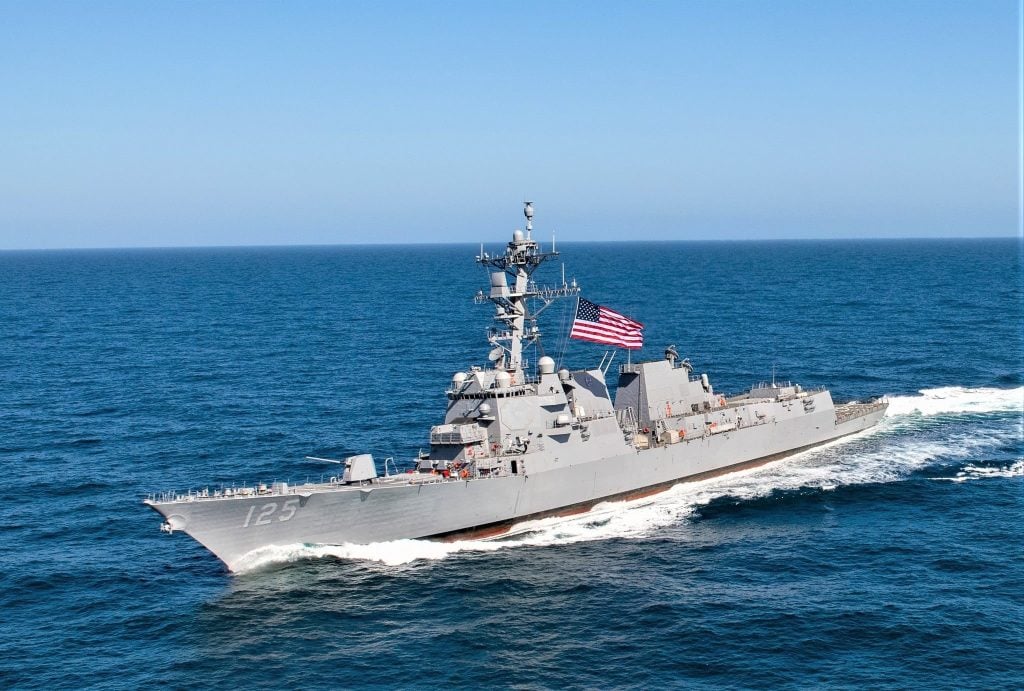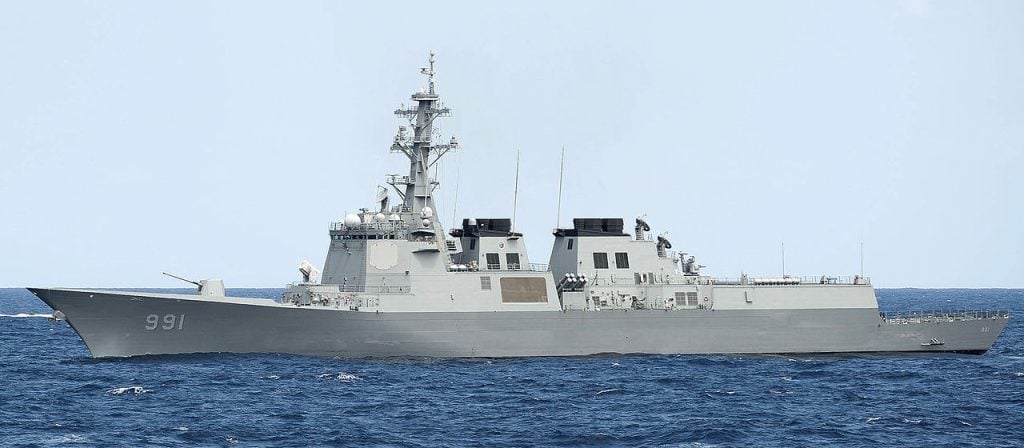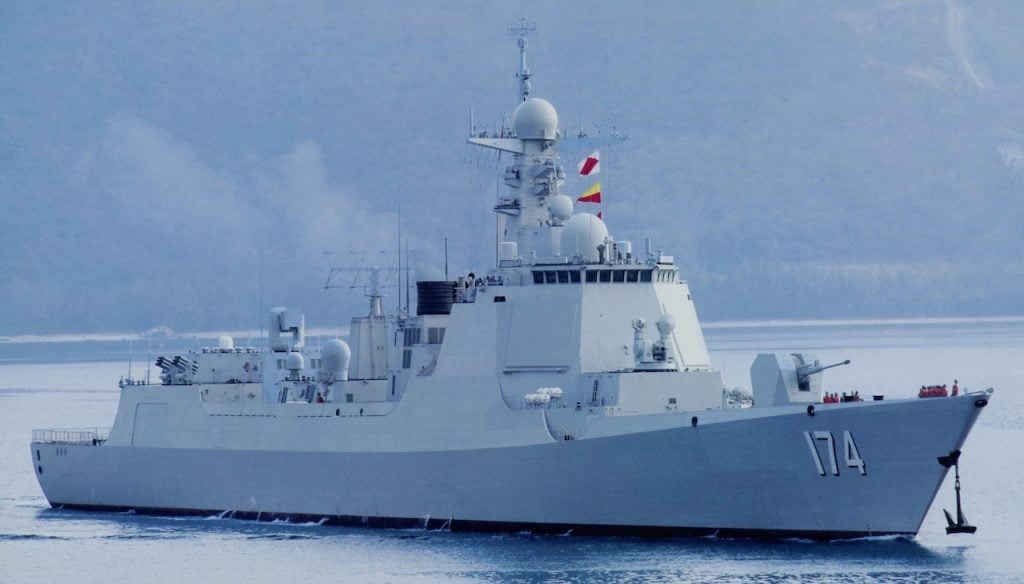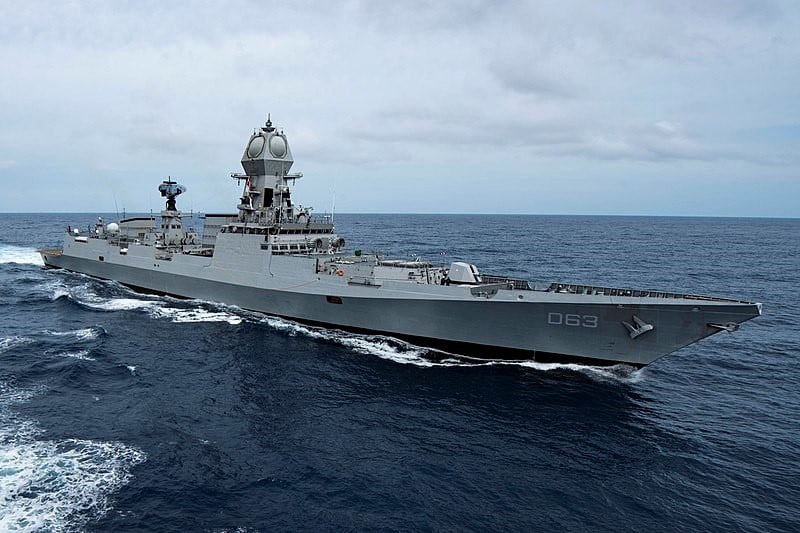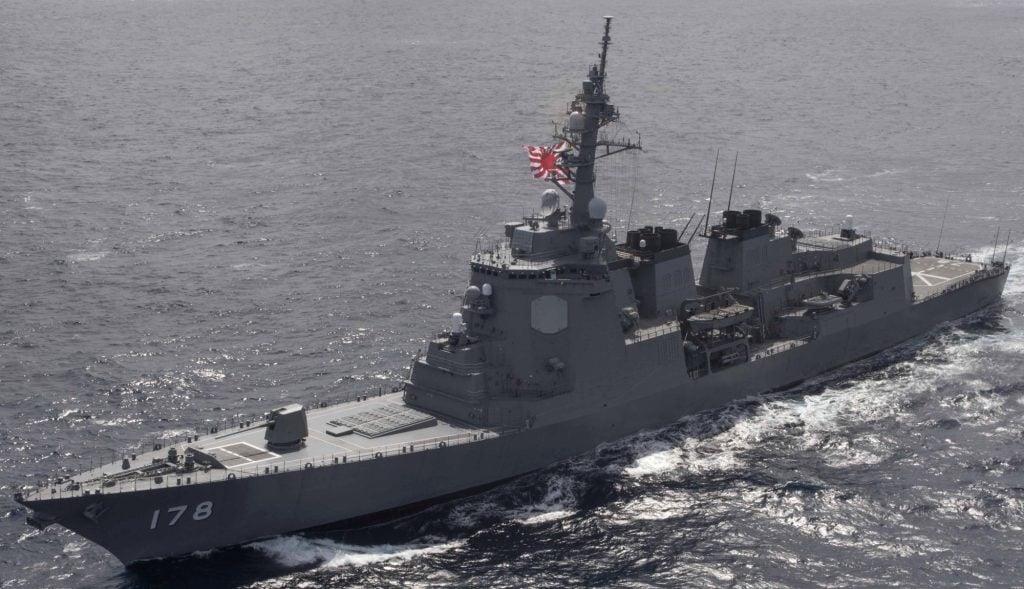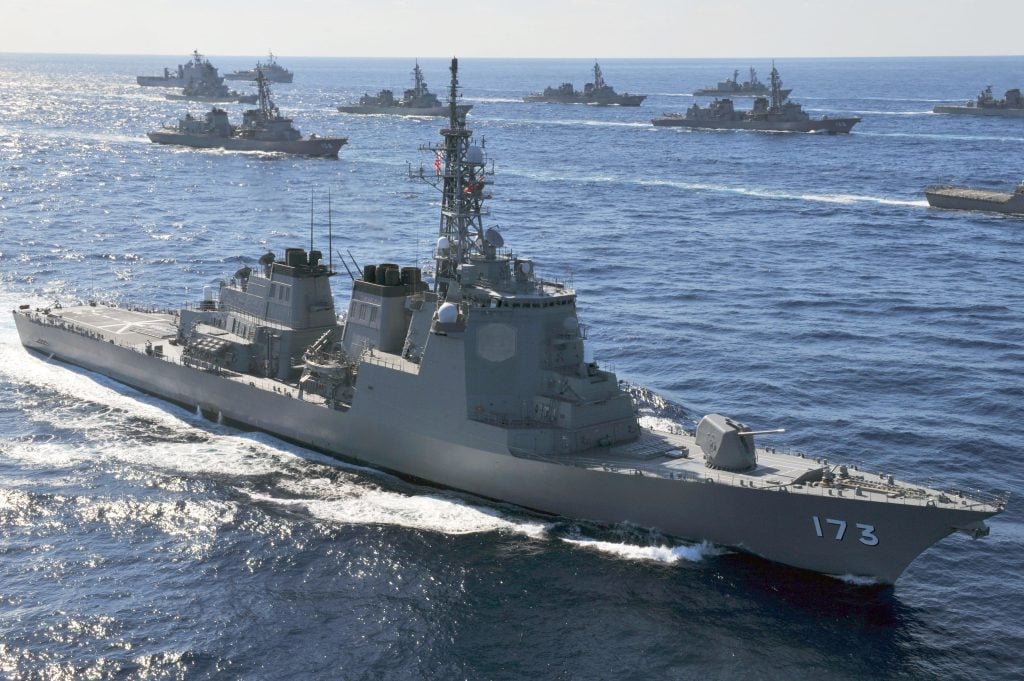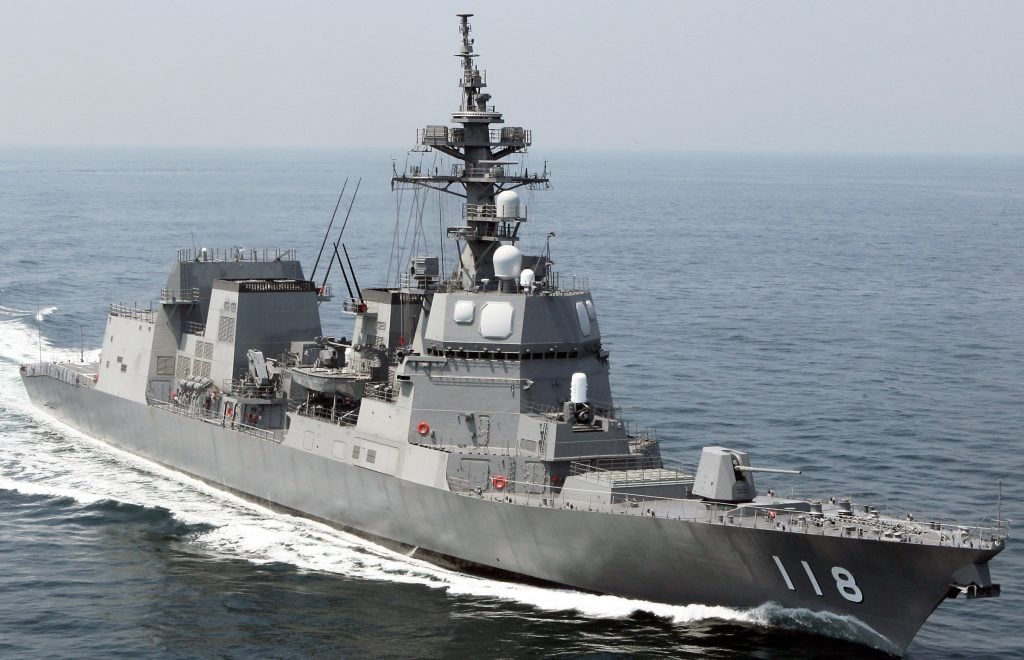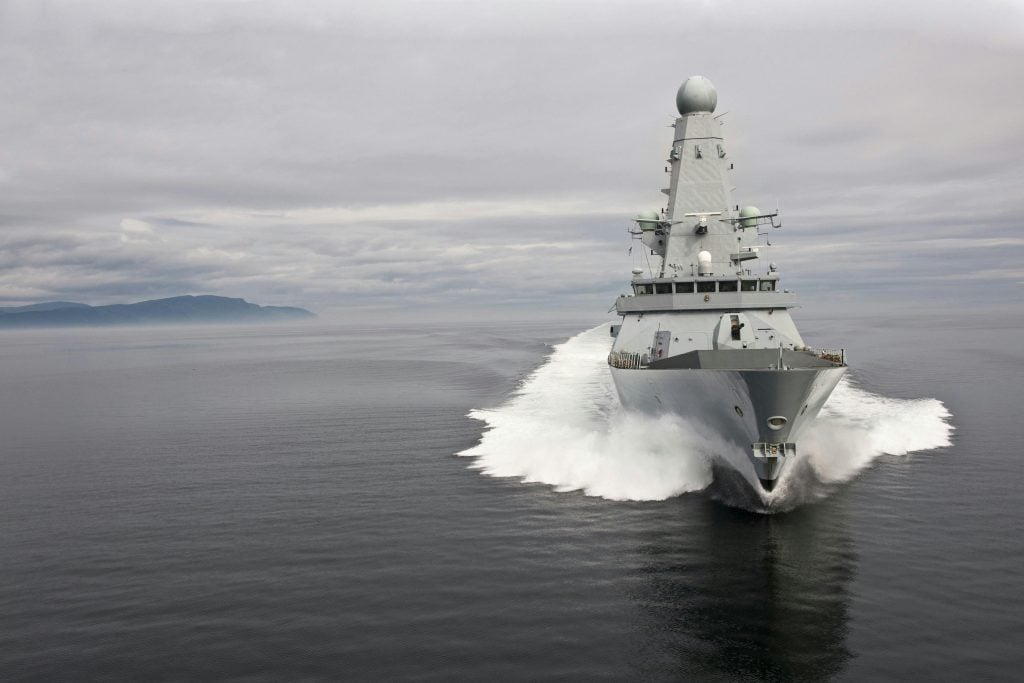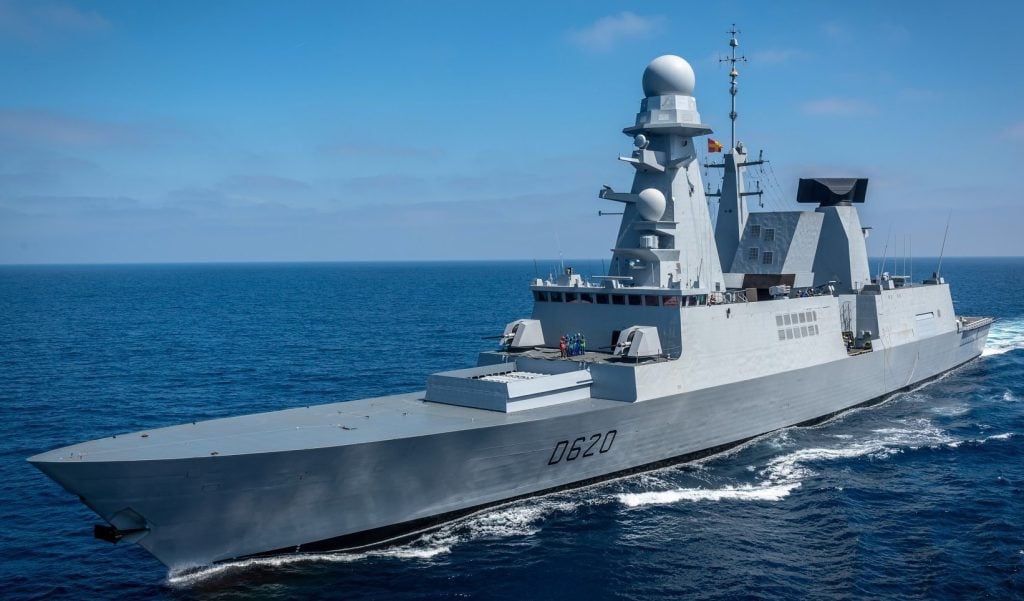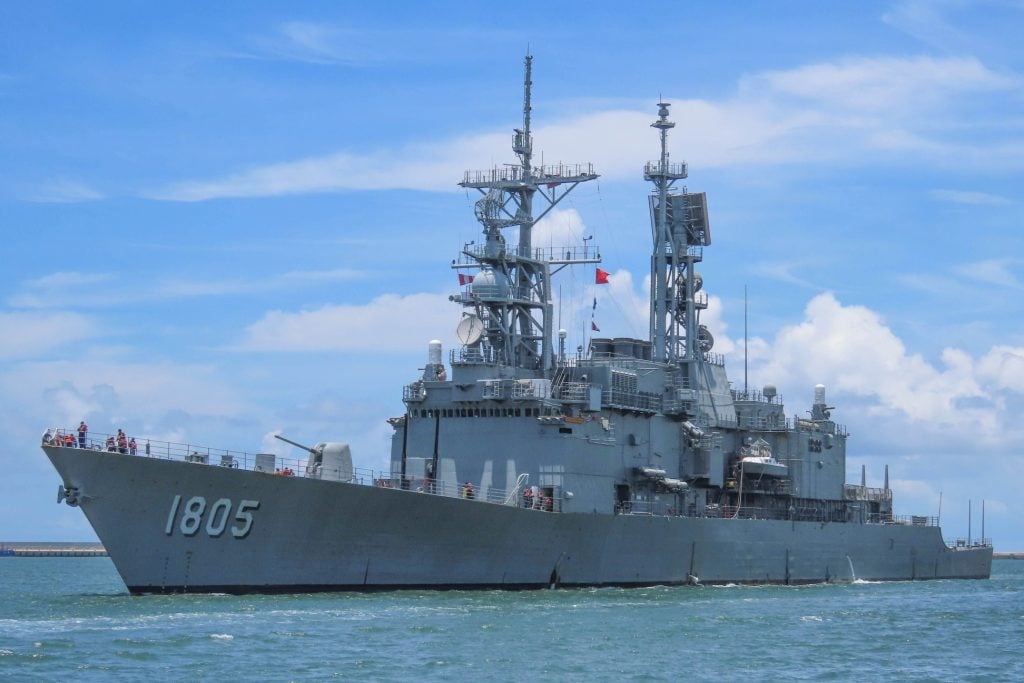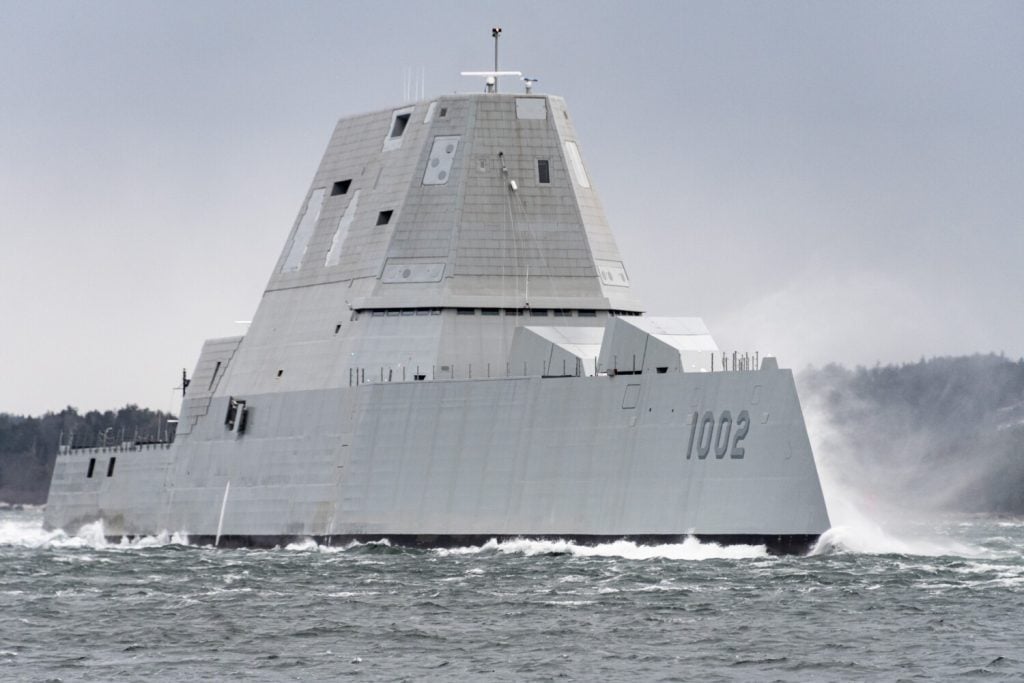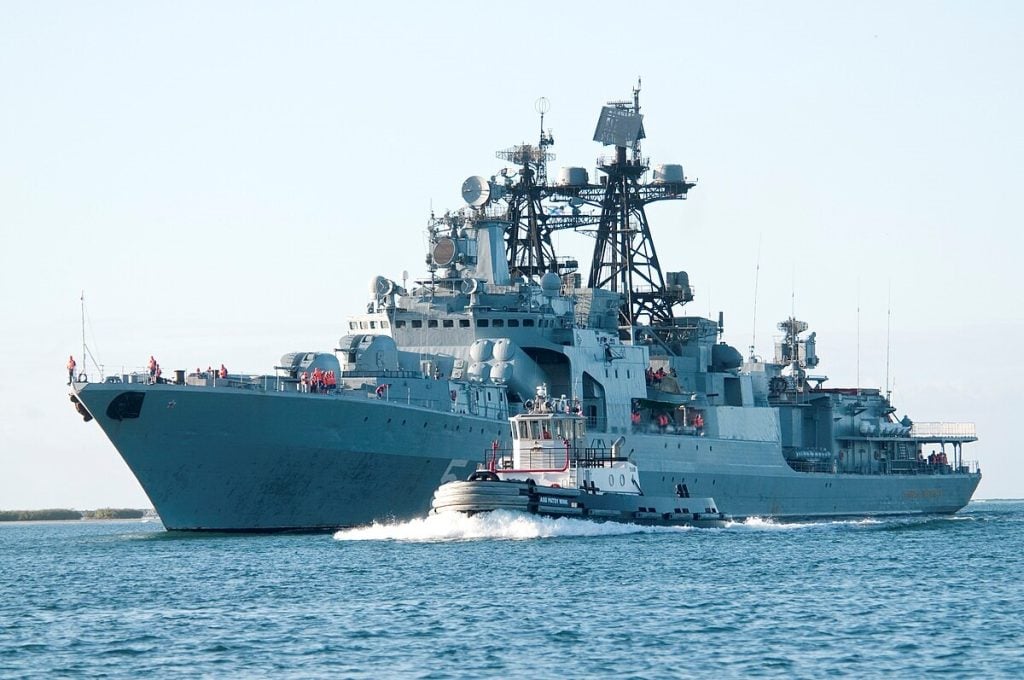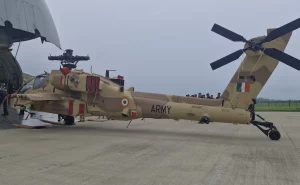Amidst the awe-inspiring aircraft carriers and enigmatic submarines that capture global attention, the unsung heroes of modern naval warfare – the mighty destroyers – play a pivotal role in shaping the tides of maritime supremacy. These versatile vessels, once known as “torpedo boat destroyers,” have evolved into formidable multi-mission surface combatants, equipped to dominate the seas, skies, and even land targets with their advanced sensors, radars, and comprehensive armaments.
In this comprehensive exploration, we delve into the world’s 12 Top Navy Destroyers in the World 2024, each a testament to the pinnacle of naval engineering and technological innovation. From the stalwart Arleigh Burke class of the United States to the stealthy Sejong the Great of South Korea, and the cutting-edge Luyang III of China, these vessels exemplify the relentless pursuit of maritime dominance. Join us as we uncover the remarkable capabilities, cutting-edge features, and strategic significance of these naval juggernauts, providing a captivating glimpse into the future of naval warfare.
Why the Air Force Rejected the F-15SE Silent Eagle
1. Arleigh Burke Class
Bearing the name of a renowned World War II destroyer officer and former Chief of Naval Operations, the Arleigh Burke class stands as the foundation of the United States Navy’s surface fleet. These multi-mission guided-missile destroyers have earned their reputation as the best in the world, thanks to their unparalleled command and control systems, advanced radars, and formidable electronic warfare capabilities.
Commissioned in 1991, the Arleigh Burke class has undergone three successive versions, each boasting significant technological advancements. Measuring 509 feet in length and displacing 9,500 tons, these behemoths are powered by four General Electric LM 2500-30 gas turbines, generating a staggering 100,000 shaft horsepower and reaching speeds of up to 30 knots. With a range of 4,400 nautical miles, these vessels can project power and maintain a persistent presence across vast maritime theaters.
The true strength of the Arleigh Burke class lies in its comprehensive arsenal, seamlessly integrated through the state-of-the-art Aegis combat system. This centralized, automated command-and-control system masterfully coordinates the ship’s sensors, including the cutting-edge AN/SPY-6(V)1 Air and Missile Defense Radar, with a diverse array of offensive and defensive capabilities. From the mighty Tomahawk cruise missiles to surface-to-air missiles, anti-submarine warfare armaments, and close-quarters combat weapons, the Arleigh Burke class is a formidable force to be reckoned with in all three critical domains of naval warfare: air, surface, and subsurface.
2. Sejong the Great Class
Hailing from the shipyards of South Korea, the Sejong the Great class destroyers are widely regarded as some of the most powerful naval vessels in the world. These warships are distinguished by their unparalleled stealth technology, meticulously designed to minimize their radar cross-section and infrared signatures, rendering them virtually invisible to enemy detection.
Measuring 165 meters in length with a beam of 21 meters and a draft of 6 meters, the Sejong the Great class displaces a formidable 10,000 tons at full load, making it one of the world’s largest destroyers. Powered by a combined gas and gas turbine (COGAG) propulsion system, these behemoths can reach top speeds exceeding 30 knots, thanks to their 75 MW of power delivered to two shafts and two controllable pitch propellers.
Like their American counterparts, the Sejong the Great class employs the cutting-edge Lockheed Aegis weapon system, which includes the SPY-1 radar, MK 99 fire control system, and the versatile MK-41 vertical launching system. This integrated suite allows the destroyer to track multiple targets, from aircraft to missiles, and respond with devastating precision. The vessel’s defensive arsenal is further bolstered by the Goalkeeper close-in weapon system (CIWS), anti-submarine rockets, and torpedoes.
Remarkably, the Sejong the Great class packs even more firepower than the vaunted Arleigh Burke class, with 128 missiles compared to the latter’s 96. This formidable armament, combined with its unparalleled stealth characteristics, makes the Sejong the Great class a true force to be reckoned with in the high-stakes arena of modern naval warfare.
3. Luyang III Class
In the past decade, the People’s Liberation Army Navy (PLAN) of China has undergone a remarkable transformation, bolstering its naval capabilities with cutting-edge technology. Perhaps the most prominent representation of this progress is the Luyang III class guided-missile destroyers, which entered service in 2014.
Measuring 157 meters in length and displacing 7,500 tons at full load, the Luyang III class is powered by a combined diesel or gas propulsion system, allowing it to reach top speeds of 30 knots. The true technological marvel of these vessels, however, lies in their advanced sensor suite, headlined by the active electronically scanned array (AESA) radar.
This sophisticated radar system, which uses a computer-controlled antenna array to direct radio waves in multiple directions, enables the Luyang III class to compete with the most advanced destroyers in the U.S. Navy’s arsenal. Complementing this sensor suite is a comprehensive armament, including cruise missiles, surface-to-air missiles, anti-ship, and anti-submarine missiles. The ship’s defensive capabilities are further bolstered by two torpedo tubes and four 18-tube launchers for decoy rockets.
With 25 Luyang III class destroyers currently in service as of August 2022, China has firmly established its naval dominance in the region, projecting power and deterring potential adversaries with these technologically superior warships.
4. Kolkata Class
Serving as a key component of India’s naval deterrence, the Kolkata class destroyers are designed and constructed using state-of-the-art components from around the world. Measuring 534 feet in length and displacing 7,500 tons, these vessels are powered by a combined gas and gas propulsion system, employing four Zorya DT-59 gas turbines and two KVM-diesel engines to reach top speeds of 30 knots and a range of 6,000 nautical miles at 18 knots.
The true strength of the Kolkata class lies in its offensive capabilities, which are anchored by a formidable Vertical Launch System. This shipborne missile canister allows for the rapid-fire deployment of long-range surface-to-air missiles, anti-ship missiles, and land-attack cruise missiles, including the BrahMos – the fastest cruise missile in the world, capable of reaching speeds of up to Mach 2.8.
Complementing this offensive might is the destroyer’s robust defensive suite, highlighted by the MF-STAR multi-function radar for surface and air search, tracking, missile guidance, and gunnery. The Thales LW-08 2D radar provides long-range surveillance, while the Barak 8 surface-to-air missile system defends against aerial threats, including high-altitude targets and supersonic sea-skimming anti-ship missiles.
The Kolkata class destroyers serve as a formidable deterrent, projecting India’s naval power and safeguarding its maritime interests in the strategic Indian Ocean region.
5. Atago Class
In response to the evolving missile threats from North Korea and the increasingly assertive actions of China, the Japan Maritime Self-Defence Force (JMSDF) has bolstered its fleet with the Atago class destroyers. These 10,000-ton warships, measuring 165 meters in length, serve as a critical component of Japan’s naval deterrence, compensating for the nation’s lack of carrier-based jets that could have provided long-range area air defense.
Powered by a Combined Gas and Gas propulsion system, the Atago class can reach top speeds of 30 knots, thanks to its four Ishikawajima-Harima LM2500-30 gas turbines generating a total of 75,000 KW. The destroyer’s sensor suite is equally impressive, featuring the SPY-1D(V) Passive Electronically Scanned Array Radar, the OPS-28E Surface and Air Search Radar, and several other advanced systems.
The Atago class’s offensive and defensive capabilities are equally formidable, with the Aegis Combat System and the reliable MK-41 Vertical Launching System serving as the backbone of its armament. These vessels are also equipped with exo-atmospheric ballistic missiles, capable of performing hit-to-kill intercepts of incoming ballistic missiles outside the Earth’s atmosphere, further enhancing Japan’s defensive capabilities.
The Atago class represents a significant shift in Japan’s naval doctrine, moving towards a more offensive military posture while maintaining its commitment to defensive operations, a testament to the evolving security landscape in the Asia-Pacific region.
7 Facts about US Doomsday Plane
6. Kongo Class
Alongside the Atago class, Japan’s fleet includes the Kongo class destroyers, which feature the renowned Aegis Weapon System (AWS) – a centralized, automated, command-and-control system often regarded as the best in the world. Although the Kongo class lacks the latest technology found in the Atago class, these vessels are still considered among the most powerful destroyers globally.
Measuring 161 meters in length and displacing 7,500 tons standard and 9,500 tons with a full load, the Kongo class is powered by a combined gas and gas propulsion system, comprising four Ishikawajima-Harima LM2500 gas turbines that deliver 75MW of power to two shafts, propelling the vessel to a top speed of 30 knots.
The Kongo class’s defensive capabilities are centered around its trio of principal radar systems: the SPY-1D air search radar, the OPS-28 surface search radar, and a dedicated missile director radar. These sensors seamlessly integrate with the MK-41 vertical-launching system, which can carry 90 RIM-66 SM-2MR block II surface-to-air missiles. The destroyer’s offensive arsenal also includes RGM-84 Harpoon anti-ship missiles, two Type 68 triple torpedo tubes, and a formidable 127mm 54-caliber Oto-Breda compact gun.
Despite their age, the Kongo class destroyers remain a formidable presence in the JMSDF, serving as a testament to the enduring power of the Aegis combat system and the Japanese shipbuilding industry’s commitment to maritime superiority.
7. Akizuki Class
While not as massive as their Atago and Kongo class counterparts, the Akizuki class destroyers of the JMSDF nonetheless pack a formidable technological punch. Measuring 150.5 meters in length and displacing 5,000 tons standard, these vessels are designed to escort and support the larger Aegis-equipped destroyers during critical ballistic missile defense operations.
Powered by a Combined Gas and Gas (COGAG) propulsion system featuring four upgraded Rolls-Royce Spey SM1C gas turbines, the Akizuki class can reach top speeds of 30 knots, despite its relatively smaller size. The destroyer’s technological prowess is further highlighted by its advanced Command, Control, Communications, Computers, Intelligence, Surveillance and Reconnaissance (C4ISR) system, as well as its state-of-the-art Anti-Aircraft Warfare (AAW) capabilities.
The Akizuki class’s armament includes eight Type 90 ship-to-ship missiles, the MK-41 vertical launch system for firing RIM-162 Evolved Sea Sparrow Missiles, RUM-139 VL-ASROC anti-submarine weapons, and the Type 07 VL-ASROC system. These versatile vessels serve as essential escorts for the JMSDF’s Atago and Kongo class Aegis destroyers, as well as the Hyuga and Izumo helicopter destroyers, ensuring a robust and integrated defensive network in the Asia-Pacific region.
8. Type 45
Constructed by BAE Systems Surface Ships, the Type 45 – also known as the Daring class – represents the largest and most advanced guided-missile destroyers in the Royal Navy fleet. Measuring 152 meters in length with a beam of 21 meters and a draft of 7 meters, these vessels displace 8,500 tons at full load and are powered by an Integrated Electric Propulsion (IEP) system that propels them to speeds exceeding 32 knots.
While the Type 45 destroyers could have been built as multirole platforms, the Royal Navy chose to focus their design on a single-role warship with unparalleled anti-air capabilities. This is reflected in their armament, which features a vertical launch system capable of firing 48 Aster 15 and Aster 30 missiles, as well as two 30 mm cannons for engaging smaller craft and a BAE Mark 8 gun for surface targets and shore assaults.
The Type 45’s defensive sensors are equally impressive, with the Sampson multi-function radar being the centerpiece. This two-faced rotating radar, enclosed in a spherical radome, utilizes adaptive digital beamforming techniques to negate clutter and combat high electronic countermeasure environments, ensuring the destroyer’s air defense superiority.
Although the Type 45 class may lack the multirole capabilities of some of its contemporaries, its laser-sharp focus on anti-air warfare makes it a formidable asset in the Royal Navy’s arsenal, capable of safeguarding high-value assets and projecting power in contested maritime environments.
9. Horizon Class
Jointly developed by France and Italy, the Horizon class destroyers represent a collaborative effort to replace the aging warships in both nations’ navies. Displacing 7,050 tons at full load and measuring 152 meters in length, these vessels are powered by a Combined Diesel or Gas (COGAG) propulsion system, consisting of two LM2500 gas turbines and two Pielstick diesel engines, enabling a top speed of 29 knots.
The Horizon class is equipped with a suite of sophisticated radar systems, including the European Multifunction Phased Array Radar (EMPAR) for surface and air search, target tracking, and missile guidance, as well as the S1850M L-band volume search PESA radar for long-range aerial target detection and early warning.
While the French and Italian versions of the Horizon class share many similarities, they do differ in their armament. Both are equipped with a 48-cell vertical launch system for Aster 15 and Aster 30 missiles, but the French variant utilizes eight inclined tube launchers for Exocet anti-ship missiles, while the Italian counterpart employs eight inclined tube launchers for Otomat anti-ship missiles. Both ships also feature two single torpedo tubes for launching MU90 Impact lightweight torpedoes.
The Horizon class exemplifies the benefits of international collaboration in naval shipbuilding, combining the expertise and resources of France and Italy to create a highly capable and versatile destroyer platform that can effectively respond to a wide range of maritime threats.
10. Kee Lung Class
The Kee Lung class of destroyers, formerly known as the Kidd class, represents a unique case in the annals of naval history. Originally built for Iran, the contract was canceled, and the U.S. Navy subsequently acquired the vessels, eventually selling them to Taiwan in 2001 for a staggering $732 million.
Measuring 172 meters in length and displacing 6,950 tons standard, the Kee Lung class is powered by a gas turbine propulsion system with four LM-2500 marine gas turbines, producing 80,000 hp and enabling a maximum speed exceeding 30 knots. These versatile warships are designed for anti-air, anti-submarine, and anti-surface warfare, as well as supporting amphibious landing exercises.
The Kee Lung class’s armament is equally impressive, featuring two 127mm guns, two close-in weapon systems, two MK26 launchers for RIM-66 surface-to-air missiles, and two MK141 quadruple canisters for Harpoon long-range anti-ship missiles. The vessels also boast two Mark 32, 324mm triple torpedo tubes that can launch MK46 torpedoes capable of engaging submarines within a range of 11 km. Additionally, the flight deck can accommodate two medium-lift helicopters equipped for anti-submarine warfare.
The Kee Lung class’s acquisition by Taiwan has strengthened the island nation’s naval capabilities, providing it with a formidable deterrent against potential adversaries and enhancing its ability to defend its maritime interests in the strategically important Taiwan Strait.
11. Zumwalt Class
The U.S. Navy’s Zumwalt class stands as the world’s largest destroyer, measuring an impressive 190 meters in length and 25 meters in width. Designed with a focus on stealth, these vessels were envisioned for a wide range of military operations, including anti-air, anti-submarine, anti-surface warfare, and littoral combat. Initially, the Navy had ambitious plans to build 32 of these high-tech destroyers, aiming to make them the standard for future naval fleets.
Construction on the Zumwalt class began in 2009, with the USS Zumwalt being the first ship to be completed. However, the project has been plagued by spiraling costs, with the average cost per ship reaching a staggering $7 billion, leading to the cancellation of the initial 32-ship plan.
Despite the challenges, the Zumwalt class remains a testament to the U.S. Navy’s pursuit of technological innovation. These vessels incorporate a host of advanced features, including a “tumblehome” hull form that enhances stability in rough seas and significantly reduces the destroyer’s radar signature, contributing to its stealthy characteristics. Additionally, the Zumwalt class abandons traditional destroyer propulsion systems in favor of a combination of gas turbines and electric propulsion, allowing the ship to operate on electric power alone at low speeds.
While the Zumwalt class project may not have unfolded as initially planned, these warships have become a testbed for new technologies, serving as a platform for the integration of cutting-edge weaponry, including the potential addition of oversized hypersonic missiles. As the U.S. Navy continues to adapt to the evolving landscape of naval warfare, the Zumwalt class remains a symbol of the service’s commitment to pushing the boundaries of maritime dominance.
12. Udaloy Class
Turning our attention to the Russian navy, the Udaloy class destroyer stands out as a reliable and versatile warship that has served the nation’s maritime interests for decades. Designed and built under the control of the former Soviet Union, the Udaloy class first entered service in July 1977, with 13 vessels ultimately completed and still in active duty today.
Measuring 163 meters in length with a beam of 19 meters, the Udaloy class displaces approximately 7,000 tons standard. Powered by a combined gas and gas (COGAG) propulsion system, consisting of two M62 cruise gas turbines and two M8KF boost gas turbines, these destroyers can reach a top speed of 28 knots.
While the Udaloy class may not be identically equipped, their primary focus is on anti-submarine warfare. The ships are fitted with the MGK-355 Polinom sonar suite, with the Udaloy II class using the more advanced Zvezda M-2 sonar system. Their anti-submarine armament includes two torpedo tubes and depth charge launchers in the form of two RBU-6000 12-round ASW rocket launchers.
In recent years, the Russian navy has undertaken a modernization program to enhance the Udaloy class’s capabilities, particularly in the realm of anti-ship weaponry. This has included the integration of newer anti-ship missiles, and the potential future incorporation of the formidable Tsirkon hypersonic missile, further solidifying the Udaloy class’s status as a reliable and adaptable asset in the Russian naval arsenal.
10 Best Infantry Fighting Vehicles in the World 2024
Conclusion
The 12 navy destroyers explored in this comprehensive analysis represent the pinnacle of maritime engineering, technological innovation, and strategic significance in the global naval landscape. From the stalwart Arleigh Burke class of the United States to the stealthy Sejong the Great of South Korea, and the cutting-edge Luyang III of China, these vessels exemplify the relentless pursuit of naval dominance.
Each of these destroyers possesses a unique set of capabilities, leveraging advanced sensors, radars, and comprehensive armaments to excel in the critical domains of air, surface, and subsurface warfare. The integration of cutting-edge systems, such as the Aegis Weapon System and the Vertical Launch System, has enabled these warships to maintain their relevance and adaptability in the face of evolving combat requirements.
As the global geopolitical landscape continues to shift, the importance of these powerful navy destroyers cannot be overstated. They serve as formidable deterrents, projecting national power, safeguarding maritime interests, and ensuring the security of vital sea lanes and strategic chokepoints. The ongoing technological advancements and international collaborations in naval shipbuilding further underscore the crucial role these vessels play in shaping the future of naval warfare.
In the ever-evolving arena of maritime supremacy, the 12 destroyers explored in this article stand as beacons of naval might, showcasing the pinnacle of human ingenuity, engineering prowess, and the unwavering commitment to maintaining a strong and resilient global naval force.
FAQs
1. What is the world’s most powerful destroyer?
The world’s five most powerful destroyers are the Sejong the Great class, Arleigh Burke-class warships, Type 052D class, Kolkata class, and Atago class. Across the vast oceans, naval powers depend on these formidable destroyers to assert dominance and safeguard their interests.
2. Who has the strongest navy in Asia?
China possesses the largest Navy, comprising 730 military vessels, followed by Russia with 598 and North Korea with 519.
3. Is the Indian Navy powerful?
Despite being ranked as the 7th most powerful navy in the world, our military spending is among the lowest. Data from FY2017-2018 shows that India allocates only 15 percent of its total military budget to the navy, significantly less than its Quad counterparts.
4. Who is the father of powerful Indian navy?
Chhatrapati Shivaji Maharaj is recognized as the father of the Indian Navy. His indomitable spirit, visionary leadership, and naval achievements have earned him this esteemed title.
5. What is the oldest navy in the world?
Established in 1317, the Portuguese Navy (Marinha Portuguesa) is the world’s oldest continuously active naval force.
